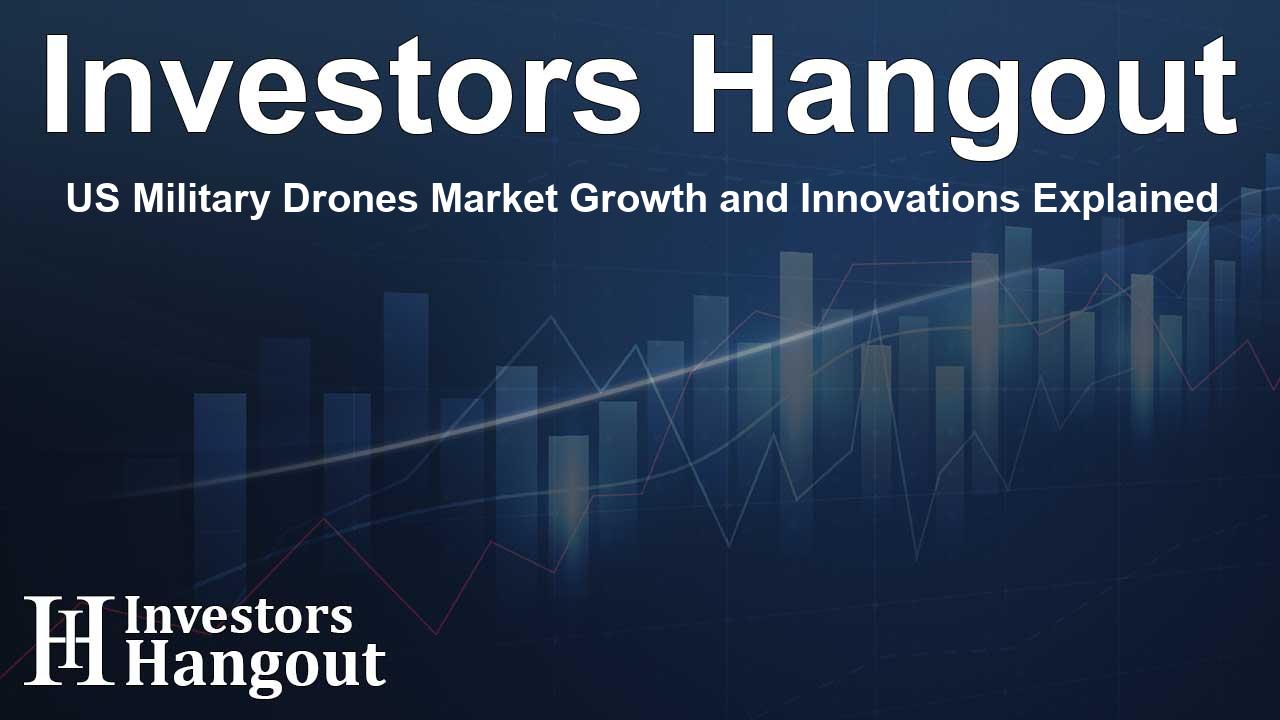US Military Drones Market Growth and Innovations Explained

The Growth of the US Military Drones Market
In the evolving landscape of defense, military drones are becoming a cornerstone for operations and strategy. The US Military Drones market is anticipated to soar, reaching USD 8.13 billion by 2023 from USD 5.73 billion, indicating a healthy compound annual growth rate (CAGR) of 7.5% during the forecasted period. As various branches of the military expand their budgets, the demand for innovative drone technologies continues to rise.
The Role of UAVs in Modern Warfare
Unmanned Aerial Vehicles (UAVs) are increasingly recognized for their pivotal role in military and security applications. The US Navy has committed to developing UAVs that can be integrated into its fleet, while the broader military is focused on enhancing capabilities through versatile Unmanned Combat Aerial Vehicles (UCAVs). This includes advancements like the Switchblade UAV, aimed at strategically augmenting tactical operations.
Key Initiatives in Military Drone Development
Efforts to bolster unmanned aerial capabilities are evident across various military branches. Programs like the Future Tactical Unmanned Aerial System (FTUAS), spearheaded by leading firms, are currently testing demonstration aircraft with a formal acquisition process on the horizon. Notably, the US Air Force's acquisition of RQ-20B Puma systems is set to enhance base security dynamics and illustrates a wider commitment to utilizing cutting-edge technologies in reconnaissance and operational roles.
Market Segmentation and Insights
When it comes to platforms, the military drone sector can be split into categories: small, tactical, and strategic drones. Although small drones exhibit a lower cost, they represent a significant volume share in the market. Conversely, strategic UAVs are expected to dominate the market value due to the high costs associated with High-Altitude Long Endurance (HALE) and Medium-Altitude Long Endurance (MALE) drone platforms.
Understanding Strategic UAVs
Strategic drones redefine military operations, enhancing intelligence collection and strategic projection. Notably, HALE models like the Northrop Grumman Global Hawk operate at incredibly high altitudes, providing extensive coverage and intelligence that are invaluable in modern warfare.
The Importance of ISR Applications
Intelligence, Surveillance, and Reconnaissance (ISR) applications lead the charge within the military drone market, commanding the largest share in 2024. Technological advancements are driving demand in this segment, alongside various operational needs and humanitarian efforts. However, certain challenges such as potential cybersecurity threats and integration issues still require careful navigation.
Emerging Trends in UCAVs
Unmanned Combat Aerial Vehicles (UCAVs) are rapidly gaining recognition as vital assets in aerial combat, performing multiple functions that enhance a military's operational reach and effectiveness. They accurately execute precision strikes and aid in information gathering, positioning themselves as crucial components in battlefield strategies.
The Global Demand for Delivery Drones
Military drones are also sought after for their ability to deliver essential supplies directly to areas of engagement. The ongoing initiatives focus on using delivery drones to transport vital resources like ammunition and food in challenging environments. Military contracts are looking for UAVs capable of navigating harsh conditions while maintaining efficiency and reliability.
Notable Players in the Industry
Several leading companies are at the forefront of the military drones industry. Prominent players include Northrop Grumman Corporation, Raytheon Technologies Corporation, and General Atomics Aeronautical Systems (GA-ASI), all contributing to the growth and sophistication of drone technologies.
Frequently Asked Questions
What is driving the growth of the US military drone market?
The growth is driven by increased military budgets, advancements in drone technology, and the rising demand for innovative unmanned systems.
What applications lead the military drones market?
Intelligence, Surveillance, and Reconnaissance (ISR) applications dominate, followed by Unmanned Combat Aerial Vehicles (UCAVs) and delivery systems.
Who are the key players in the military drone industry?
Key players include Northrop Grumman, Raytheon Technologies, and General Atomics Aeronautical Systems, among others.
What are the types of military drones?
Military drones are categorized into small, tactical, and strategic types, with further segmentation based on performance and operational use.
What challenges face the military drones market?
Challenges include cybersecurity vulnerabilities, integration with logistics systems, and regulatory compliance in various operational theatres.
About The Author
Contact Hannah Lewis privately here. Or send an email with ATTN: Hannah Lewis as the subject to contact@investorshangout.com.
About Investors Hangout
Investors Hangout is a leading online stock forum for financial discussion and learning, offering a wide range of free tools and resources. It draws in traders of all levels, who exchange market knowledge, investigate trading tactics, and keep an eye on industry developments in real time. Featuring financial articles, stock message boards, quotes, charts, company profiles, and live news updates. Through cooperative learning and a wealth of informational resources, it helps users from novices creating their first portfolios to experts honing their techniques. Join Investors Hangout today: https://investorshangout.com/
The content of this article is based on factual, publicly available information and does not represent legal, financial, or investment advice. Investors Hangout does not offer financial advice, and the author is not a licensed financial advisor. Consult a qualified advisor before making any financial or investment decisions based on this article. This article should not be considered advice to purchase, sell, or hold any securities or other investments. If any of the material provided here is inaccurate, please contact us for corrections.
